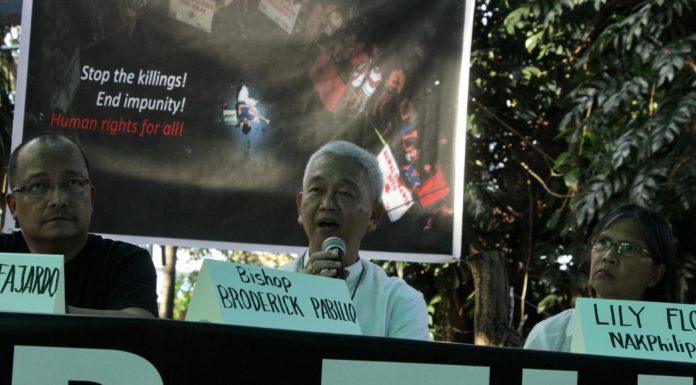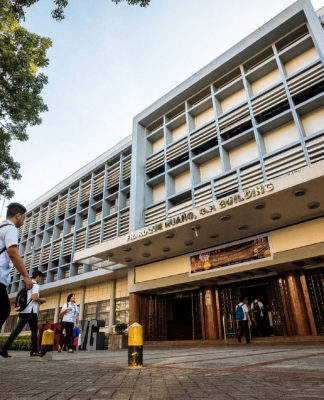GLORIOUS processions and feasts in honor of the Virgin Mary in full regalia are much celebrated events in the country. Not only do the festivities reflect the Filipino Catholics’ ardent devotion to Mary, they also prove the impact of this devotion local culture and spiritual life.
In a country where over one-fourth of all parishes have the Virgin Mary as the titular patron, Filipinos have become accustomed to several Marian images and titles which are venerated in certain localities and provinces and adopted as patron in Catholic schools and religious congregations.
As expressed in the 1975 CBCP Pastoral Letter “Ang Mahal na Birhen: Mary in the Philippine Life Today,” the widespread devotion to the Blessed Mary goes back to the origins of Christianity in the Philippines.
Since the coming of the Spaniards, there have been ancient statues of Mary, like Nuestra Senora de Guia (1571), now venerated in Ermita Church, and Our Lady of the Rosary in Manila (1587).
But according to Fr. Jose Antonio Aureada, Faculty of Sacred Theology dean, O.P., the main reason Filipinos are particularly inclined to Mary is because of our matriarchal society.
“We have a very powerful image of the Mother in us. Our subconscious love for our own mother is satisfied with our devotion to Mama Mary,” Fr. Aureada told the Varsitarian.
Aside from the more popular Marian images, like the Immaculate Conception and Our Lady of the Holy Rosary, several other shrines dedicated to Mary have won widespread popularity either as focal points of pilgrimages or as well-known centers of devotion, like the Our Lady of Peace and Good Voyage in Antipolo, Our Lady of Penafrancia in Naga City, Nuestra Señora Virgen de Regla in Lapu-Lapu, Cebu, and Our Lady of Manaoag in Pangasinan, among others.
These Marian titles and images are often misread by non-Catholics who often question the need to venerate Mary with various names and to be dressed in colorful robes.
Apart from the official Marian titles found in the Litany of the Virgin Mary, Fr. Aureada explained that other titles got their origin from the place where Mary was believed to have an appeared such as the Lourdes in France or Fatima in Portugal.
He added that the physical differences in Marian images could be attributed to the nature of the place where she supposedly appeared.
“Mary adapts herself to the ethnic characteristics of the place of her apparition so it looks like we have many Marys but we actually have one Mary.” Fr. Aureada said
Among the several Marian titles and images in the country, there are still those which are not rooted in either the Litany or the places of apparition.
“We have many (Marian) titles which the Vatican doesn’t approve of yet like the Our Lady of Agoo in La Union and also Birhen ng mga Barangay, which is very local and very Filipino but doesn’t have universal sanction from Rome,” Fr. Aureada said.
He said that there are instances when the local bishop may allow, to a certain degree, a public or local veneration of an image but thedefinitive acknowledgement must by the Vatican. He said there is a tendency for people from other parts of the country to make pilgrimage to a certain image or shrine without confirming if it is canonically approved.
But Fr. Aureada also stressed that the official stand of the Vatican need not be forced on Marian devotees.
“It doesn’t mean that when a Catholic doesn’t believe in a specific Marian apparition or image it can endanger his salvation,” he said. “The Vatican only authenticates these images and they are not to be treated as Marian dogmas which are essential to Catholic faith.”
Fr. Aureada likewise recognizes the tendency among Filipinos to venerate Mary in a manner which already borders on fanaticism and excess.
“Since we used to have in our culture the veneration of anitos, in a way we transfer this Filipino ethnic mentality to our Christian religion,” Fr. Aureada said.
He explained that a Marian devotion can already be considered an extreme if the devotee already neglects his relationship with the Lord and is no longer living a Christ-centered spiritual life.
“We have many Marian celebrations which naturally focus on Mary, but I think the Mother won’t be happy if she is the center of attraction,” Fr. Aureada said.
In the same manner, the 1974 Apostolic Exhortation of Pope Paul VI concerning the right ordering and development of devotion to the Blessed Virgin Mary, states that “Mary’s role in the liturgy must always be as Mother of Church to bring all her children to her Son Jesus because all true Mariology must be Christ-centered.”
Fr. Aureada said that Mary is not really preaching about herself, but is trying to bridge people closer to Jesus.
“Just like in advertising, you are selling the product and not the one who advertises the product,” he said. “Likewise, the best advertiser of heaven is Mama Mary that’s why she appears here and there, she is an ambassadress.” Kathleen T. Valle















